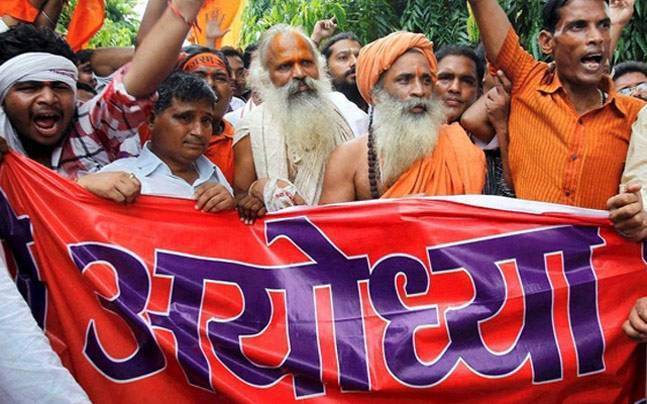Supreme Court’s call for an amicable, negotiated settlement to the Ram Temple-Babri Masjid dispute is reasonable.
The Supreme Court on Tuesday, March 21, 2017 suggested that the parties to the contentious Ram Janmabhoomi / Ram Mandir dispute attempt to find an amicable solution out of court through the process of dialogue and consensus in the spirit of “Give-a-bit” and Take-a-bit”.
The Supreme Court bench headed by Justice JS Khehar was responding to BJP MP Subramanian Swamy’s plea urging the Court to agree to an early and day-to-day hearing on the matter in order to find a speedy resolution to the issue.
The court observed that “These are issues of religion and sentiments, where all the parties can sit together and arrive at a consensual decision to end the dispute. All of you may sit together and hold a cordial meeting…” Further, CJI Khehar even offered to play the role of a mediator in order to find an amicable solution if the parties involved in the dispute wanted him to.
The historical trail and the twists and turns that have marked the Ram Janmabhoomi / Ram mandir issue are well known and have been covered, reported, and analyzed extensively over the years and is neither the mandate nor the focus of this article.
This article only looks at the Supreme Court’s “suggestion” and attempts to answer the following questions:
- Why did the Supreme Court choose to appeal to the parties concerned to work towards an amicable solution outside the purview of the court and law?
- Is the court justified in making such a suggestion, or should it instead have simply gone ahead and pronounced the verdict?
- Is it in the best interest of the parties concerned and also the in the best interests of our country to take this route rather than a cantankerous, and bitter legal feud?
The first question as to why the Supreme Court made the suggestion to the parties concerned to look for an amicable solution outside the courts was partially answered by the court itself when it observed that matters of faith, religion, and sentiment are best settled in the spirit of give and take.
Also, it bears mention here that the Lucknow bench of the Allahabad High Court in 2010 had ruled for a three-way division of the disputed area, between the Sunni Waqf Board, the Nirmohi Akhara, and the party for Ram Lalla in effect handing over two-thirds of the land to the Hindus and one-third to the Muslims.
The Supreme Court may well be offering the Muslims a face-saving solution that can be mutually arrived at on the basis of this Allahabad verdict, instead of a Court directive that reinforces the same and potentially causes loss of face.
The Government of India and the Hindu representatives have welcomed the move with open arms but the Muslim representatives including the Babri Masjid Action Committee have rejected the offer while continuing to maintain that this is purely a matter of title and has no religious bearing – in the process completely ignoring the spirit in which the Supreme Court has made this suggestion.
Secondly, insisting that there is no religious validity to the claim made by the Hindus belittles the religious sentiments of millions of Hindus for whom Ram and his Janmabhoomi are matters of deep and abiding faith. Thirdly, it goes against the court’s own advice of “Give-a-bit” and Take-a-bit” – Is not the Allahabad High Court verdict of 2010, itself an expression of this very principle?
The second question of whether the Supreme Court should have made such a suggestion as some commentators have opined is really a non-question. The suggestion by the Supreme Court is a time-bound one, not an open-ended advice. The court has asked Mr. Subramanian Swamy to consult with the parties and inform them about the decision on March 31 after which the next steps will be initiated.
The court is simply providing a window for all parties to bury their differences and come together to arrive at a solution that will satisfy all parties concerned without potentially endangering the socio-cultural fabric of a plural society that is India.
Finally, without a doubt a mutual decision arrived at through consensus and in the true spirit of give and take is the best situation for not just the parties involved but for the whole nation itself. It is also in the best interest of the Muslim community also to free themselves from the overbearing influence of the mullahs and their self-serving agenda which is definitely not in the interest of the Muslim community who can no longer continue to stay away from mainstream India. It is for the Muslim community itself to indulge in soul-searching and introspection – would they or their own leaders be so open and considerate if they were in the majority and Hindus were a minority? For an answer, they simply have to look no further than our neighboring countries – Pakistan and Bangladesh.
The suggestion by the Supreme Court is therefore an opportunity for the communities to come together and once again establish the plurality and the concept of unity- in-diversity unique to our country. The ball as they say is in the Muslim’s court and one hopes that they don’t miss this opportunity.
